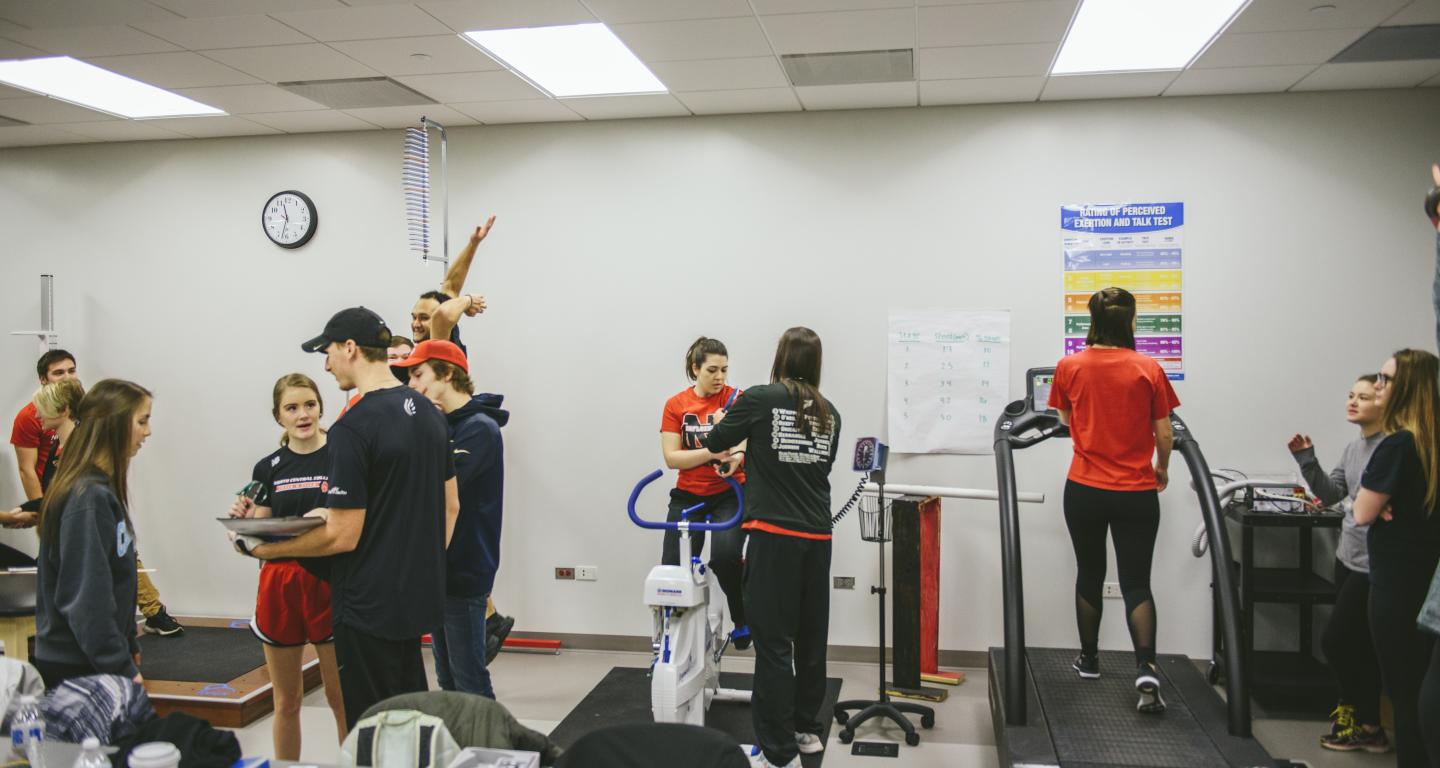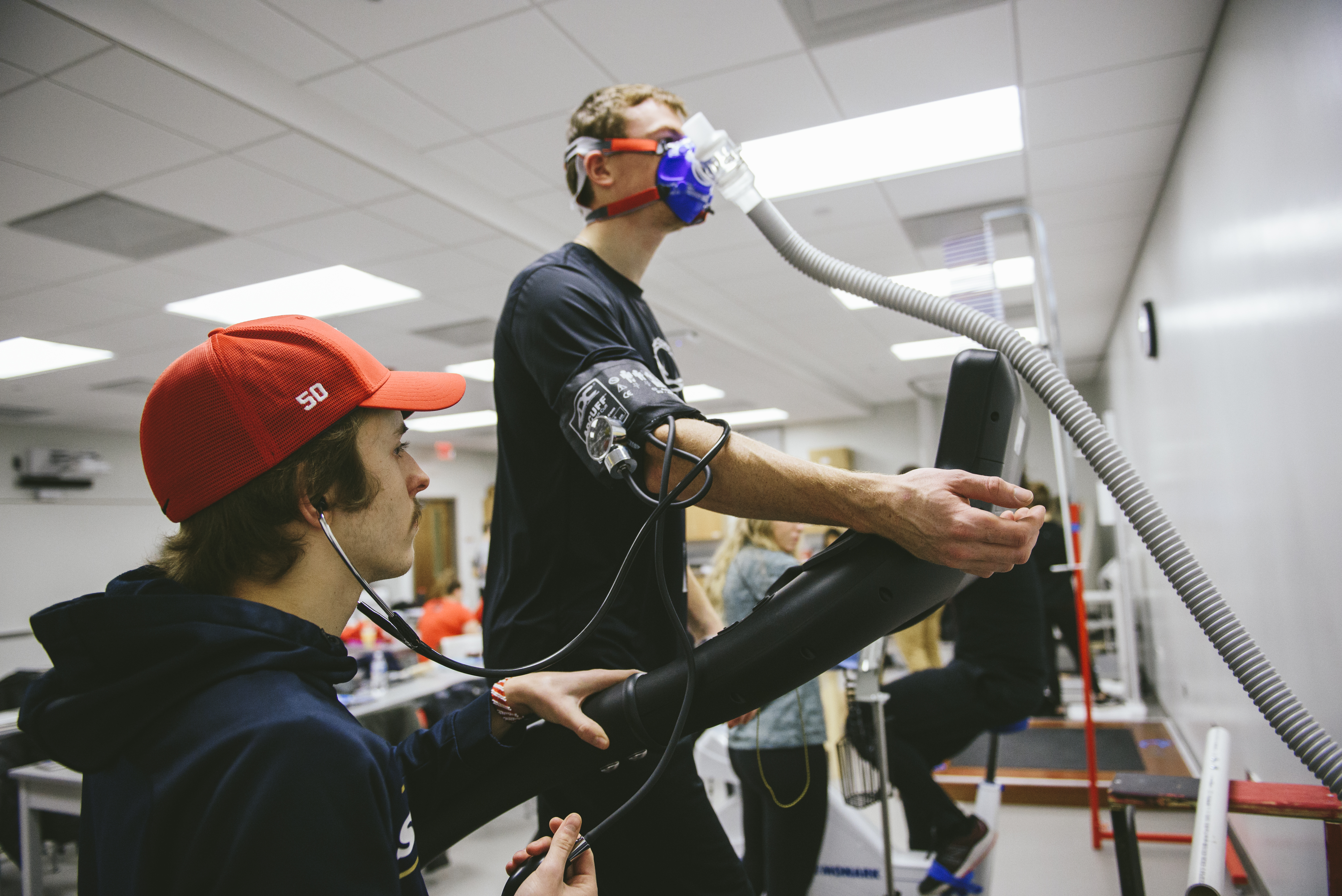
Athletics
Anatomy of a human performance lab
Aug 24, 2018
Perseverance is as much psychological and emotional, as it is physical. Exercise science is exactly that—the study of how the human body works, what its limits are and how to push it to a new level. Our state-of-the-art Human Performance Lab is the ideal place to conduct research and prepare for future careers in fitness, athletic training and physical therapy.
Let’s take a look around the lab:
-
Medicine ball and balance boards: Balance is important not just for avoiding injury, but for mental health and physical recovery from injury. Tests like these allow students to examine the reactions of subjects to added weight and stress while trying to maintain a consistent center of gravity. These evaluations can be key for learning more about the elderly and the disabled.

-
Vertec: The Vertec tool is well known for its use in the NFL Combine, where football teams measure the vertical jump of prospective draft picks. It’s also frequently used to test basketball and volleyball players. Vertical jump tells a lot about leg strength, foot and ankle durability and even core strength.

-
Cardiopulmonary exercise test (CPET): Running on this treadmill while measuring blood pressure, oxygen loss and carbon dioxide production can assess how well heart, lungs and muscles are working. It evaluates cardiovascular fitness and tests for a large number of heart, lung and metabolic conditions.

-
Resistance bands: A popular piece of equipment in modern gyms, resistance bands let you use your own body weight to complete a workout. They provide many of the same benefits as free weights or exercise machines and can be safer and more affordable. Working with bands lets researchers track the progress of healthy subjects trying to get stronger as well as those rehabilitating from injury.

- The Bod Pod: This chamber uses air displacement to take an extremely accurate measurement of weight, body mass, metabolic rate, lung capacity and other attributes of a human subject. Just a few minutes in the pod can give you important insight on whether your diet and exercise plan is working properly for your body type.

- Kettlebells: Kettlebells combine resistance training, cardiovascular conditioning, and both explosive and deliberate movements into one tool. Swinging these heavy weights is a nearly complete exercise, and allows for testing of a number of different physical attributes and reactions.

- InBody BIA: The InBody bioelectrical impedance analysis machine (or BIA) measures body composition—including body fat percentage, total body water, metabolic rate and skeletal muscle mass—using a low-level, imperceptible electrical current. The current measures the differing resistance of the parts of the body and provides insight beyond typical assumptions based on age and gender.

Interested? Learn more about our exercise science program!
